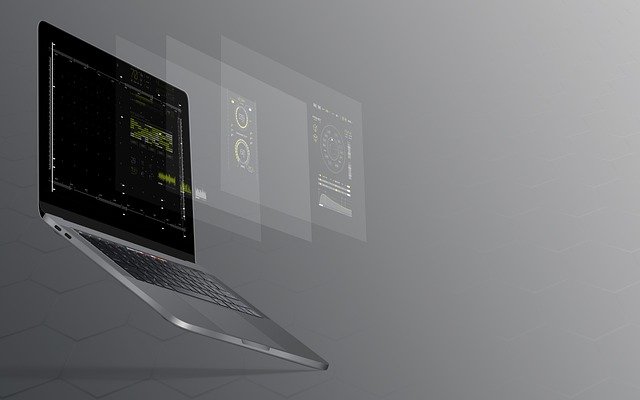This post will show you how hyper-converged market is shifting.
In recent years, hyper-converged industry experts have stayed consistent, but technological options among such giants and other companies have evolved.
Hyper-converged infrastructure pledges can improve IT by merging storage and processing in a single appliance or system. This one-box strategy condenses the flexibility of networked storage and virtualization.
Likewise, providers are increasingly aiming to supply hyper-converged software, particularly software-defined storage.
However, the market is shifting. This is partly due to consumer demand and the increasing focus on cloud-based and as-a-service-style usage during the outbreak, which is expected to last.
Read on to learn what hyper-converged infrastructure is and how the hyper-converged market is shifting.
Table of Contents
What Exactly Is Hyper-Converged Infrastructure?
HCI (hyper-converged infrastructure) combines servers and storage into a single, global system with intelligent software, producing flexible, basic components that replace traditional infrastructure consisting of individual servers, storage arrays, and networks.
It combines data center server hardware with locally connected storage devices and is driven by a distributed software layer to minimize the typical pain points associated with outdated infrastructure.
The 5 Changes In The Hyper-Converged Market
While some vendors have determined that hyperconverged infrastructure is not a viable business model for them, some have joined the industry, particularly with software-defined products.
HCI is now well established as an on-premise alternative, particularly in installations where administrative simplicity is critical. We will look at some of the changes in the hyper-converged industry.
1. As-a-Service
Suppliers market HCI as a service, and it becomes part of the product line. The rise of hyper-converged as a service may be driven more by vendors recognizing a chance to provide resources on a subscription model than by technological advances.
On one level, it makes perfect sense for enterprises purchasing infrastructure as a service (IaaS) to acquire HCI. Scalability of cloud infrastructure on a node-by-node basis will decrease administration overheads if the workload suits itself to horizontal instead of vertical scaling. It may also make it easier to replicate on-premise HCI workloads onto the cloud.
In response, CIOs must determine if HCI is appropriate for the workloads they want to migrate to IaaS or the public cloud in general. One advantage of the cloud is the ability to purchase computing and storage resources independently and scale them up or down as needed.
Some of this intrinsic flexibility is lost when using HCI as a service. However, providers are investing in as-a-service delivery, which should simplify fine-tuning hyper-converged instances to accommodate varied workloads, especially when combined with the opportunity to utilize OpEx rather than CapEx for HCI.
READ ALSO: 4 Ways To Improve The IT Infrastructure In Your Company
2. Vendors Expand and Retrench Software Products
Famous companies demonstrate that HCI is gaining momentum among suppliers worldwide. The system offers recovery, backup, and high-quality application performance.
Although HCI software is primarily designed for data storage/data centers, it offers a wide range of services due to enhanced IT controls. Due to its horizontal scalability, HCI can handle a massive workload.
Moreover, with the increased popularity of HCI among suppliers, some believe the technology does not meet their demands. According to several observers, certain vendors no longer consider HCI services.
Famous suppliers may be found in the technology business. Other providers are developing software-only solutions to maintain market share. Rather than physical items, the companies are focused on supplier-agnostic software.
READ ALSO: Addressing Geopolitical Risks in Vendor Relationships
3. Disaggregation
The basic goal of hyper-converged infrastructure is to combine all components. The adaptable software enables IT developers to install solutions effectively and quickly. This saves firms money and time, ensuring efficient system administration. HCI software is more horizontally oriented than vertically oriented in terms of size.
Additionally, vertical scaling applications do not require the use of an HCI system. However, some customers use SAP Hana on HCI, although most monolithic software does not support HCI. Hyper-converged systems are unable to grow resources independently.
HCI elements are being divided by manufacturers, easing the scalability. VMware is a fantastic software that enables customers to share storage across several locations. It is simple for vendors and people to share Dell storage over the vSAN architecture by utilizing VxRail.
However, HCI cannot scale resources on its own. Because the storage, computing, and virtualization are all housed in the same chassis, administrators must include all three, even if they only need one of them.
Vendors that missed the initial HCI wave attempted to join the market with disaggregated solutions that could scale independently for servers and storage.
Traditional HCI suppliers, on the other hand, paid heed. This year, VMware introduced the HCI Mesh functionality to its vSAN HCI software, enabling flexible scalability. Instead of purchasing extra HCI nodes with storage and computing. However, all vSAN clusters require vSAN storage.
4. HCI for Containers
HCI is extensive and includes support for containers. Various providers in the technology sector value containerized workloads. Some businesses operate with Red Hat to develop open-source Kubernetes versions.
Although the HCI system isn’t yet ready for containers, providers are creating hyper-converged nodes to meet the demand. Because HCI supports containers, it is a reliable technology for many providers and purchasers. Most businesses are investing in containers, which HCL providers should follow.
READ ALSO: How to Protect Your Computer from Ransomware
5. An Excellent Fit at the Edge
HCI provides solutions to some of the challenges businesses face when implementing technology in branch offices, small offices, or remote sites. These may not have separate IT staff or data rooms for larger and more complex equipment.
Similarly, hyper-converged will lend itself to border applications, mainly when offered in a durable appliance form. By eliminating the demand for separate storage, computing, and network interface, cooling requirements and energy consumption are reduced.
Furthermore, using a single supplier also implies fewer moving components. It may be an exaggeration to state there is less to go wrong with hyper-converged systems – they may be complicated – but IT teams should be able to oversee all of their systems from a single management console.
However, as one corporation warns, there is no uniform industry concept of edge. Suppliers are considering a wide variety of use cases, and you should avoid those claiming to be able to satisfy all of them.
CIOs must begin by examining the use case for hyper-converged infrastructure in their specific context and then determine which vendors offer the best solution for the workload and configuration.
How Hyper-Converged Market Is Shifting: Frequently Asked Questions
The hyper-converged infrastructure (HCI) market is undergoing a period of significant change, driven by evolving technology trends, growing user demands, and intensifying competition. Here are frequently asked questions about the current landscape:
What are the major trends shaping the market?
- Integration with public cloud: HCI vendors are increasingly integrating their offerings with public cloud services, enabling hybrid and multi-cloud deployments.
- Focus on edge computing: HCI’s ability to simplify management and resource allocation makes it attractive for edge deployments, driving growth in this segment.
- Software-defined everything (SDx): The HCI architecture aligns well with SDx principles, offering greater flexibility and automation.
- Security and compliance: Security concerns remain paramount, with vendors focusing on advanced features and certifications.
- AI and machine learning integration: The integration of AI and ML unlocks new capabilities for performance optimization and resource management.
READ ALSO: The Crucial Role Of Cloud Computing In The Business World
How is the competitive landscape evolving?
- Consolidation: The market is experiencing consolidation, with established players such as Nutanix and Dell EMC facing competition from cloud giants like AWS and Azure.
- Open-source options: Open-source HCI options, such as RancherOS and StarWind, are gaining traction, driven by their lower costs and flexibility in customization.
- Focus on specific verticals: Vendors are increasingly targeting specific industry verticals, such as healthcare and education, with tailored offerings.
- Partnerships and acquisitions are becoming increasingly common as vendors seek to expand their reach and capabilities.
What are the key challenges facing the market?
- Skill gap: Finding skilled professionals to manage and troubleshoot HCI systems can be challenging.
- Integration complexity: Integrating HCI with existing IT infrastructure can be complex, requiring careful planning and expertise.
- Security concerns: Securing HCI environments requires ongoing vigilance and proactive measures.
- Vendor lock-in: Some HCI vendors may create vendor lock-in, making it difficult to switch to other solutions.
- Keeping pace with innovation: The rapid pace of technology advancement necessitates continuous evaluation and upgrade strategies.
What does the future hold for the HCI market?
Despite these challenges, the HCI market is expected to continue growing as organizations seek simpler, more flexible, and scalable IT infrastructure solutions.
Key areas of growth will likely include:
- Increased adoption of hybrid and multi-cloud deployments.
- Greater focus on security and compliance.
- Enhanced integration with AI and ML for automation and intelligence.
- Wider adoption of HCI in edge computing scenarios.
- More partnerships and consolidation within the market.
Conclusion
You must upgrade your IT infrastructure to thrive in such a rapidly expanding environment. To put it another way, you should make it more hyper-converged.
This will help you develop a more effective IT infrastructure that enhances cost-effectiveness, adaptability, and performance.
Staying informed about these trends and challenges will be crucial for businesses to navigate the evolving HCI landscape and make informed decisions about their IT infrastructure investments.
Hopefully, the above discussion may provide insights into how significant hyper-converged changes are for each industry.
INTERESTING POSTS
- Browser Compartmentalization: How To Compartmentalize Your Web Browsers
- Ways Manufacturers Can Benefit from Going Online
- 5 Best Browsers for Online Gaming
- Understanding The Windows 10 Ransomware Protection – UPDATED 2022
- 6 Ways To Secure Your Home Construction Site
- Cloud Hosting Provider: QuickBooks Hosting Vs In-House Server
- How To Start A Cybersecurity Company
- Cloud Storage Guide For Businesses and Individuals
About the Author:
Marie Beaujolie is a computer network engineer and content writer from Paris. She is passionate about technology and exploring new ways to make people’s lives easier. Marie has been working in the IT industry for many years and has a wealth of knowledge about computer security and best practices. She is a regular contributor for SecureBlitz.com, where she writes about the latest trends and news in the cyber security industry. Marie is committed to helping people stay safe online and encouraging them to take the necessary steps to protect their data.
Daniel Segun is the Founder and CEO of SecureBlitz Cybersecurity Media, with a background in Computer Science and Digital Marketing. When not writing, he's probably busy designing graphics or developing websites.










